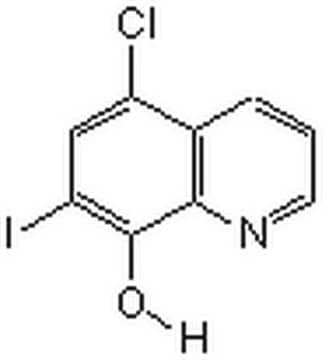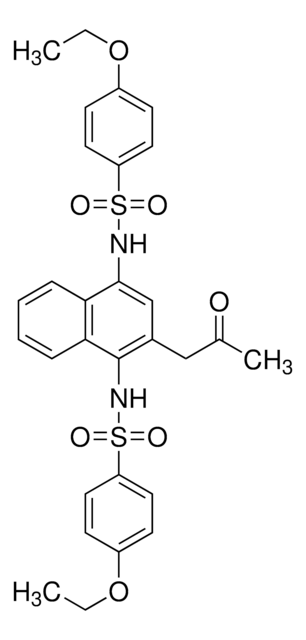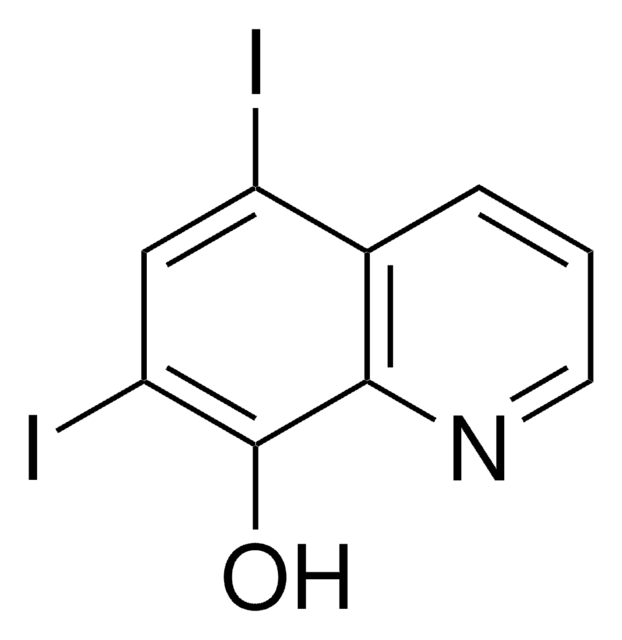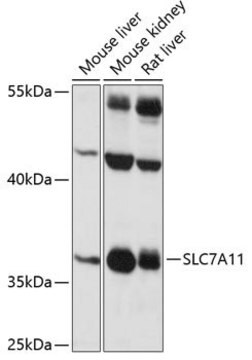推薦產品
等級
pharmaceutical primary standard
API 家族
clioquinol
製造商/商標名
EDQM
應用
pharmaceutical (small molecule)
格式
neat
儲存溫度
2-8°C
SMILES 字串
Oc1c(I)cc(Cl)c2cccnc12
InChI
1S/C9H5ClINO/c10-6-4-7(11)9(13)8-5(6)2-1-3-12-8/h1-4,13H
InChI 密鑰
QCDFBFJGMNKBDO-UHFFFAOYSA-N
尋找類似的產品? 前往 產品比較指南
一般說明
This product is provided as delivered and specified by the issuing Pharmacopoeia. All information provided in support of this product, including SDS and any product information leaflets have been developed and issued under the Authority of the Issuing Pharmacopoeia. For further information and support please go to the website of the issuing Pharmacopoeia.
應用
Clioquinol EP Reference standard, intended for use in laboratory tests only as specifically prescribed in the European Pharmacopoeia.
包裝
The product is delivered as supplied by the issuing Pharmacopoeia. For the current unit quantity, please visit the EDQM reference substance catalogue.
其他說明
Sales restrictions may apply.
訊號詞
Danger
危險分類
Acute Tox. 3 Oral - Eye Irrit. 2 - Skin Irrit. 2 - Skin Sens. 1
儲存類別代碼
6.1C - Combustible acute toxic Cat.3 / toxic compounds or compounds which causing chronic effects
水污染物質分類(WGK)
WGK 3
Lin W Hung et al.
Future medicinal chemistry, 4(8), 955-969 (2012-06-02)
In 1906, Alois Alzheimer first characterized the disease that bears his name. Despite intensive research, which has led to a better understanding of the pathology, there is no effective treatment for this disease. Of the drugs approved by the US
Peter J Crouch et al.
Journal of neurochemistry, 119(1), 220-230 (2011-07-30)
Impaired metal ion homeostasis causes synaptic dysfunction and treatments for Alzheimer's disease (AD) that target metal ions have therefore been developed. The leading compound in this class of therapeutic, PBT2, improved cognition in a clinical trial with AD patients. The
Simon Melov
Trends in neurosciences, 25(3), 121-123 (2002-02-20)
Alzheimer's disease (AD) is a devastating age-related neurodegenerative disorder that has been intensively studied over the last several years. In vitro and in vivo studies have led to an understanding of some of the physico-chemical properties of amyloid, a well-characterized
J Tateishi
Neuropathology : official journal of the Japanese Society of Neuropathology, 20 Suppl, S20-S24 (2000-10-19)
It remains a tragic event that some 10,000 individuals in Japan developed a unique neurologic disease, subacute myelo-optico-neuropathy (SMON). Many of the affected patients still suffer serious sequelae, such as dysesthesia and muscle weakness in the lower extremities, and loss
Jie Geng et al.
Advanced healthcare materials, 1(3), 332-336 (2012-11-28)
Metal ions play important roles in amyloid aggregation and neurotoxicity. Metal-ion chelation therapy has been used in clinical trials for Alzheimer's disease (AD) treatment. However, clinical trial studies have shown that long-term use of metal chelator can cause adverse side
我們的科學家團隊在所有研究領域都有豐富的經驗,包括生命科學、材料科學、化學合成、色譜、分析等.
聯絡技術服務





![2-[4-[(7-氯-4-喹啉基)氨基]戊基]氨基乙醇 British Pharmacopoeia (BP) Reference Standard](/deepweb/assets/sigmaaldrich/product/structures/390/362/61c88f5c-c373-4489-9234-6bc366e641a7/640/61c88f5c-c373-4489-9234-6bc366e641a7.png)
